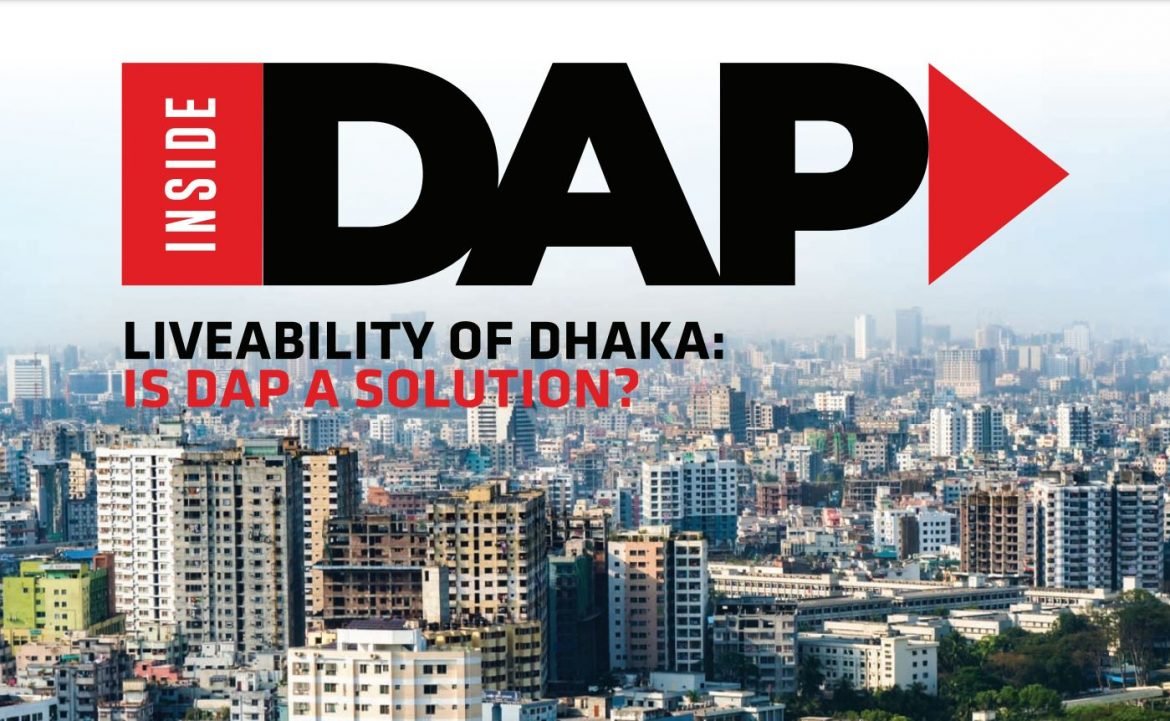Dhaka city being one of the fastest growing megacities in the world has experienced opulence as well as poverty throughout its 400 years of glorious history. This settlement was the centre of trades in Mughal & British era; this city has been declared as capital during the Mughal, British, Pakistan era, and after the birth of Bangladesh this city is the capital of the country. Hence, from pre-Mughal era, Mughal era, early modern era, and colonial era to late modern and contemporary era; the evolution journey was not melodious all the way. However, rapid developments led to an unplanned growth of the city. But, our Dhaka now is at stake! Dhaka became one of the least liveable cities in the world with inequity, high density, incompatible land use, traffic jam, road accident, pollution, poor drainage system, and other associated problems. Thus, Dhaka needs to breathe free for the survival of its citizens.
The Government of the People’s Republic of Bangladesh along with foremost urban planners, architects, policy makers, engineers and adhering professionals and organisations with state-of-the-art technology- aimed to construct a detailed planning to improvise Dhaka as a megacity. The planning project under the Ministry of Local Government and Rural Development (LGRD), is widely known as the ‘Detailed Area Plan (DAP)’.
Detailed Area Plan (DAP: 2016-2035) is a local-level planning document, used as the basis for policymaking in land-use zoning, spatial planning, infrastructural development, civic amenities, utility services, and associated issues of the metropolis in the long run. In addition, DAP will act as a guide to future planning strategies, development projects, cityscape, climate & greenery and overall demographics. On the heels of the Dhaka Structure Plan (1995-2015) of the Rajdhani Unnayan Kartripakkha (RAJUK), DAP is a 20-years master plan aiming to improve lifestyle quality of urban dwellers, development pattern, through Urban Development Indicators.
How the city Functions?
What is the major original role of a city? If the city is the human shelter for a settlement, human being has to be the driving force behind the economy. Thereby, the quality of human life must be under consideration.
But, is this city a safe haven for its citizens? Alternatively, are people here considered as tool for growth to keep economic engine functioning? At the same time, what is the condition of the environment around which people build their settlements? Do the people get the opportunity to refresh themselves in the contact with healthy nature? Instead, do people face physical and mental sufferings due to polluted environment? What kind of city is Dhaka as a human habitation? Is the city considered as human settlement or a shelter? The process and steps of making this plan revolve around these questions and evolve.
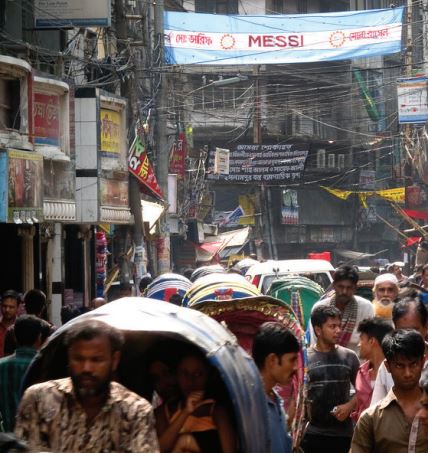
How a modern city is perceived in previous planning reports or planning initiatives? While describing the function and identity of the city, most planning initiatives refer city as “Engine of Economic Growth.”
In terms of Dhaka, this city is actually functioning the role of economic growth. Although this metropolis covers only 1% of the total area of the country, but this city occupies about 10% of the total population of the country. Dhaka provides the major formal employment of the country, and accounts for more than one-third of the Gross Domestic Product (GDP) of the national economy. Dhaka is not only the driving force of the economy of Bangladesh; it is also the vital lifeblood of the economy of the whole country. Therefore, according to this widely used definition of a growth-centric city, Dhaka should be at the very top of the list of ideal cities in the world.
Inevitably, when economy and associated indicators define a city, the development and quality of life will also be measured by the economic parameter. Improvement of economic parameter will be the furtherance of the city; following this sense, instead of human welfare, infrastructural development defines the growth of this city.
Dhaka: Not Only a Physical Space but a Living, Ever-Growing Entity
This plan did not contemplate Dhaka as a stagnant physical space, rather conceived the city as a living, ever-changing and ever-growing entity like its 2.5 Crore population, here the main identity of the city is human shelter and settlement, which makes the plan relatively flexible, and integrated. Flexible necessarily does not mean the exploitation of the rules, but to allow this dynamic and fast-changing city like Dhaka to develop properly without losing its own characteristics. Dhaka is one of the most densely populated cities in the world; thereby spontaneity of growth and development should obviously be a key factor for such fast-growing city. In a city like Dhaka, trying to bring all concerns, all sectors under strict control is not only difficult; but it is almost impossible, and ineffective too; thus integrated and priority based action plans like DAP can make the city liveable and spontaneous.
Ensuring Welfare of Human Life For A Better Habitat
While preparing the plan, DAP focused on ensuring the welfare of human beings, guaranteeing the basic rights and needs of citizens; where people can find livelihood and accommodation as well as can explore dynamic opportunities. While a city itself is the focus of growth and development, and an organised centre of economy, administration, infrastructural, and institutional activity, the welfare of human life has been prioritised in this Master Plan. The other role or identity of the city is not denied here in any way, here is a little change in priority; all other activities of the city have been portrayed as the supporting tool to ensure people’s benefit.
“Building Dhaka as a liveable, eco-friendly, and resilient metropolis while maintaining the local socio-cultural norms and ensuring a sustainable environment” – to implement this vision DAP includes the provision of affordable and available housing, employment opportunities, affordable and comfortable public transport, public spaces (green space, and open spaces), coexistence of human settlements and nature, public safety and secured environment.
This plan considered the city as a living entity, focused on the maximum welfare of this entity; such approach towards the role of the city inevitably changes the principles of planning, and criteria of development indicator and effectiveness. Policy decisions, infrastructure plans, proposals, development indicators – have been prepared to achieve the goal of improving the quality of life.
People-oriented planning is the driving force for a well-planned city; but in conventional planning, the basic rights and needs of citizens have not been prioritized in most planning proposals, policies, rules, and regulations of previous planning initiatives. Thereby infrastructural development and distribution of resources of this city will ultimately facilitate a privileged part of the society.
The Core Philosophies of DAP?
Inclusive Planning
The plan is designed to accommodate the mass people, especially those with very limited access to housing, transport, employment, and social activities, etc. The objective is to build equity by removing the barriers in the way of life, and taking necessary and urgent steps for improved standard of living in their day-to-day life. In this equitable and inclusive planning of DAP, approach has been made to take into account the needs and lifestyle including living conditions, transport, livelihood, social activity, etc. of people from all socio-economic classes.
Although, Dhaka city is fostering and heading towards an economic and social growth, but only a specific portion of the overall population gets the benefit of this unequal growth. The irony is, more than one-third of the total population in the Dhaka metropolitan area is living below the poverty line.
If we take a look at the housing sector, affordable housing is still beyond the limit of low-income people and middle-income people. DAP has surprisingly found out that, 84% of the city’s building structures are one-storied building, one-third of the total population lives in slums, and more than 76% of building structures are muddy or tin-shed buildings.
Regarding transportation, only 4% of people of the whole population own private car, and more than half of the lower and lower-middle-income people are pedestrians.
From the above observations, it is clear that, the people, who are pedestrians, work in the informal sector, live in the one-storied, muddy or tin-shed buildings are the same people who live beyond their means with a meagre income. They are the mass people; with majority in numbers they represent the major portions of the city. Thus, they cannot be ignored or excluded from the city planning. How the presence and needs of these mass people have been manifested in planning initiatives is a major question for all. In the DAP, initiatives have been taken to make a paradigm shift in the previous planning practices.

Restoration of Human-Nature Relationship
Bangladesh is the largest deltaic island in the world; human life here has always been nurtured by relationships with nature throughout thousands of years of history in this low-lying, flat settlement. Water has always been the resource and a matter pride for the settlement. In contrary, eventually people are suffering from water logging in recent times, now this city goes under 3-4 ft. water even after 40 mm rainfall. There have not been any project initiatives taken before which can reduce the water logging in the city within two to four years; rather construction of western embankment and Panthapath Box-culvert have also disrupted the water flow. Dhanmondi area is already suffering from water logging issues. In this riverine area, water flow has been disrupted against the nature; then water flow has become the curse which in the near past has been a felicity, due to the inappropriate and short-term project initiatives. This plan does not consider water flow as the problematic phenomena like conventional planning; rather water resource has been perceived as the blessing, and strength.
Before 1960, there were 65 Canals around the city, now there are only 26 canals are remaining; from 1978-2009 water reservoir area has been decreased to 10.28 sq. m. from 29 sq. m. Currently, the survey report of DAP showed that this city occupies only 1% open space such as; Park, Play Field, Stadium, etc. About half of the city’s solid waste is not yet in the collection process which is amount to 45%, these wastes eventually fall into low-lying lands, wetlands, rivers, canals and creates unbearable pollution. Dhaka has been ranked in the top three in almost all of the world’s most polluted cities in terms of pollution.
Dhaka is a city surrounded by rivers and canals, however, what astonishes the most is- the rivers are used as dump stations of wastages and pollutants, whereas, the canals are hardly flowing. In such circumstances, DAP comes up with planning regarding the Buriganga and Shitalakkha River including river management & water treatment, waterways creating, channelling with canals and removal of pollutants.
Now, natural elements like canals, Water Reservoirs, rivers, and Open Spaces are being depleted gradually due to land grabbing, and environmental pollution. Consequently, citizens are suffering from water logging; and do not have the opportunity to interact with elements of nature (air, water, soil) in their daily life; interaction among humans to humans is also disrupted in such a concrete development plan. Both physical and mental growth and development face negative impacts in this adverse environment.
Bearing in mind the two-way separation between human-human, and human-nature, this DAP plan is focused on bringing balance in this social and natural isolation. Another objective of this plan is the restoration of the relationship of the human being with nature to minimize the negative effects of man’s actions towards nature and to have harmony between human and nature. So that the settlement will return to the eco-friendly eco-system, where nature can grow in own way where human beings can have the benefits and blessings of nature. According to the plan, elements of nature can co-exist with the activity and growth of the city.
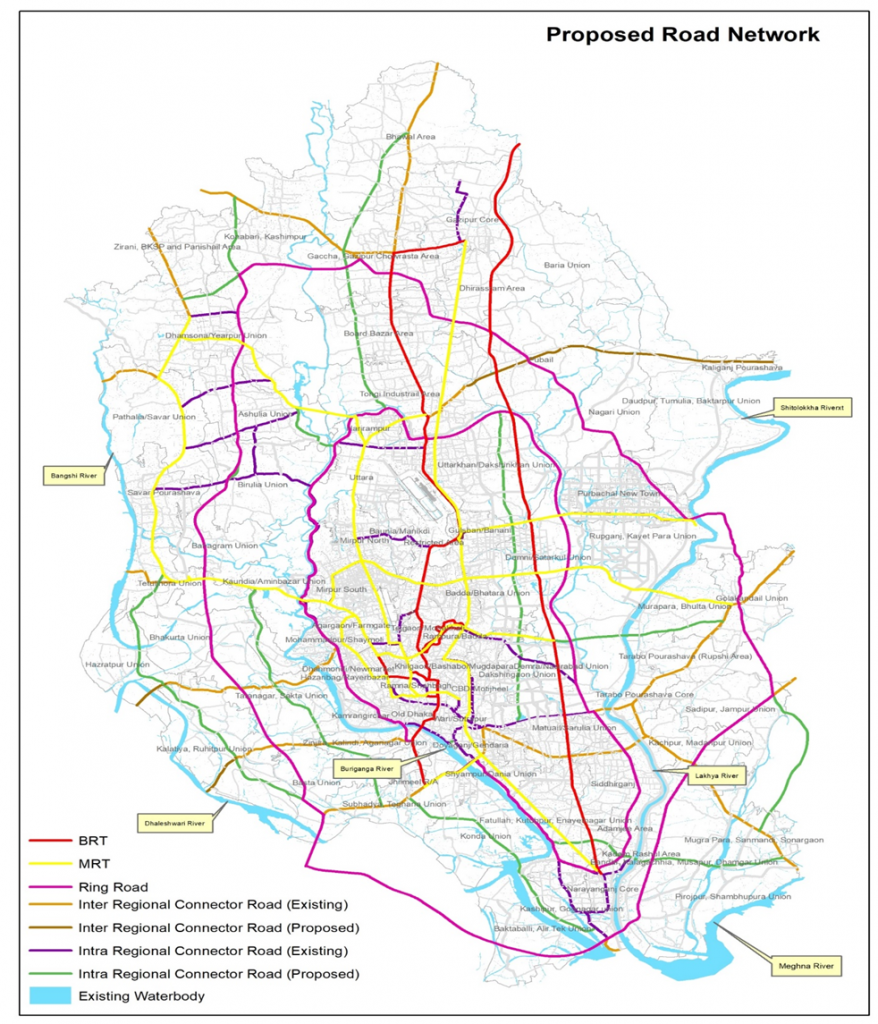
Area infrastructure
This Master Plan has been prepared for 1528 sq. km. of Dhaka Metropolitan Region; the layout and features of this metropolis are not homogeneous. According to the plan, 60% among 1528 sq. km. land is considered as city area. This vast region includes densely populated areas like old Dhaka (Lalbagh, Gendaria) as well as the remote rural areas like Savar, Keraniganj, trade area of Narayanganj, and vast forest area of Gazipur. Along with the physical environment, this region also exhibits socio-economic diversity; here extreme poverty co-exists with vast opulence.
Dhaka is one of the largest and fastest growing metropolitan areas in the world. Every year more than 500,000 people are migrated to the population of this city, which is more than the total growth of many big cities of the world in 20 years. About 90,000 new structures are constructed in this city every year.
Major planning goals
Four major planning goals have been formulated considering the specific planning principles, national and international high-level plans, and policies (for example, United Nations Sustainable Development Goals (SDGs), Perspective Plan 2021, Seventh Five Year Plan, Dhaka Strategic Plan 2016-35, etc.). The four major goals and objectives for the implementation of the plan and policies are below:
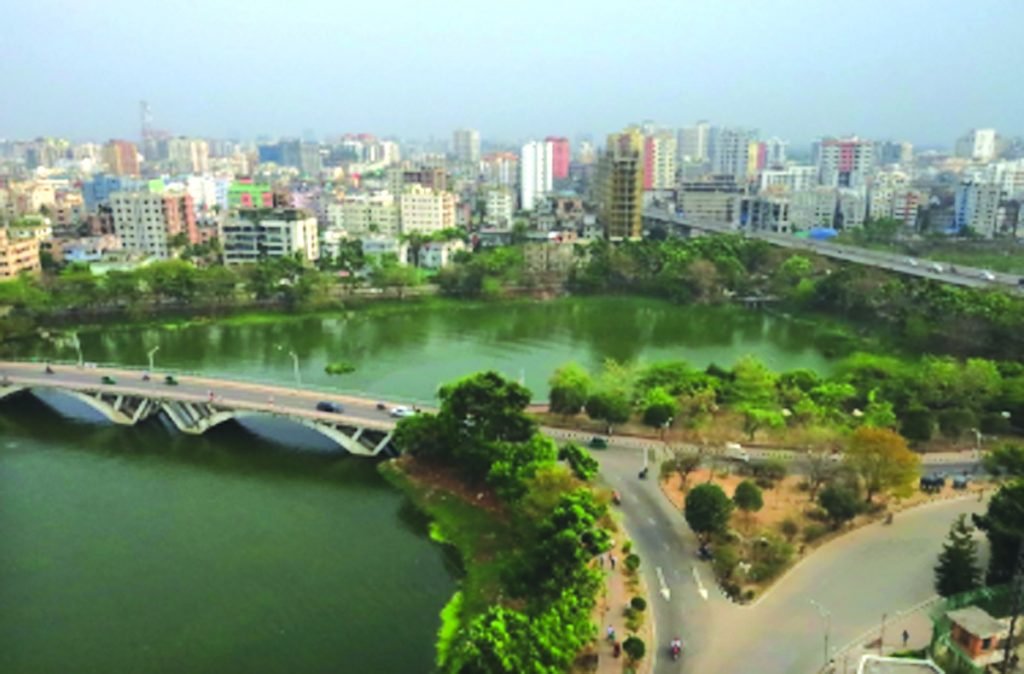
1. Universal freedom of investment
The planning philosophy considers development as the opportunity of a transparent, open, and responsible environment of investment. The ever-evolving freedom should be manifested for all sections of society; otherwise, the open environment will be used to preserve the interest of powerful interest groups.
2. Improved quality of life
This plan portrays the improved quality of life as the freedom of choosing the improved lifestyle; usually, city people enjoy the latest technological innovations and social system. Here, how equally these opportunities are open to mass people measures the quality of life. Thereby, the quality, availability, accessibility of basic elements in daily life is essential.
3. Resilient city
Here resilience has been defined in terms of Disaster resilience, social formation, and economic structure. The resilient city can recover very quickly with minimal damage of infrastructure, the manifestation of high social and economic capital.
4. Ecology conservation and revitalization
In this plan, human life has not been portrayed as a separate/independent/distinct entity, rather human being is perceived as an integral and essential part of the ecosystem. Thereby, ensuring the welfare of people as well as balancing the ecosystem is considered mandatory while planning.
Leverage Points
It should be kept in mind that a plan is not a wish-list; a plan needs to be strategic with specific guidelines. Lack of planning focus may result in losing the track, and failure of the plan. So, while planning, the real-life influencing issues should be raised firmly with due significance; moreover, working on every detail may result in wastage of time and energy, and diverting on the wrong track. Working on particular priority issues can result in fast and effective transformation of Dhaka city to a complete megacity.
Considering the characteristics of the city and implementation strategy, from the beginning, DAP focused on identification of such visionary change-making priority points where even a small change can initiate a series of continuous, multiple significant and far-reaching effects on the city and its citizens. Trivial change of such issues can affect positively on many areas, peoples, sectors, or issues around it. For example, if a canal network can be restored and revived, it simultaneously can be used for communication route, drainage path, recreation mode, microclimate control, and many other purposes.
In order to achieve the goals of the plan, firstly, such effective and influential issues have been identified and then their supplementary plans, designs, maps, and policy guidelines have been prepared.

Priority for non-motorized transport and pedestrian movement
According to the survey of Revised Strategic Transport Plan (RSTP: 2015-2035), the bus carries the highest number of people which is 44%, only 4% of people own private car, but private car cause miserable traffic by occupying 88% road space! Pedestrians occupy 40% of the total trip, and 35% of trips are made by non-motorized transport. Meanwhile, those people who earn below Tk. 20,000 make 60% trips by walking. Therefore, it is obvious from the travel pattern of citizens that this city requires specific recommendations for a pedestrian-friendly environment and suitable, safe, comfortable, affordable bus route planning. Despite that, pedestrians are the most vulnerable road users in this city, this city is not provided with convenient walk-able environment, and public transportation system.
It is pointless to implement any plan or project for Dhaka city without any recommendation for the main means of transportation of these people. Unfortunately, multiple mega projects have been undertaken to improve the transportation system of Dhaka; which fails to recognise the needs of these common people.
Revised Strategic Transport Plan (RSTP: 2015-2035) has proposed 5 MRT Lines, and 2 BRT lines, which requires huge budget and will carry only 11-13% trip; and this plan did not emphasize bus route rationalization, walk-able environment, and private car control strategy. These are the reflections of not considering mass people. DAP recommended priority guidelines and detailed directional strategy for pedestrians and non-motorized transport. Bus Route Planning and waterway planning have been emphasized instead of Car Oriented Planning to ensure equity.
Progressive education and healthcare provisions for the majority of people
Planned education and health policy reform indicates the social and economic development for future generations in the long run. There have been some reforms in education and health policy; but long lasting, well planned, and fundamental change has not been ensured yet. Existing public health and education facilities fails to meet the demand, private services are beyond the means of underprivileged people.
DAP recommended appropriate measures to be taken to make the ‘Education for All’ policy applicable to all people. Thereby, 627 schools, and 247 hospitals have been proposed in this plan. There should be a primary school within walking distance of home, a 50-bed hospital should be provided in each union and ward; thereby people can get better access to services and facilities, and the setting will reduce travel demand and traffic jam. To make the basic education and health services affordable for all, it is recommended that the government be responsible for the construction of 80% of the total demand.

Construction of 627 schools requires only 25,000 crore budgets but this construction serves multi-dimensional benefits, as it enlightens the future generation, as well as provides necessary services to solve disaster crisis, water logging, and traffic congestion. Thereby, while designing the schools, area per student, number of students per class, orientation for sunlight and air, orientation of blackboard, door, and window, teacher’s room, laboratory, library, common room, play field – all should be considered. So that the students can get open play field, and the playground can be used as disaster shelter place in times of calamities or emergencies; the toilets of the schools can also be used according to the demand of disaster shelter places. The playground can also be worked for water filtration, and ground water recharge.

Giving priority to public transport system including Roads, Waterways and Railways
In order to make public transport accessible and affordable, DAP formulated an integrated public transportation network plan emphasizing roadway, waterways, and railways. 574 km waterways and 3207 km road network have been proposed in the plan. Current 228 km inter-regional connecting roads in Dhaka will be increased to 291 km with the extension of collector road by 1200 km.
This plan can be implemented in short-term action plan, and does not require mega project budget. Regarding the mode choice, Bus Route Rationalization and Company Based Bus Services have been recommended to create disciplined public bus system, and to reduce traffic congestion. DAP also plans to inaugurate 202-km cycle lane. DAP has given utmost importance on conservation of rivers, canals, and lakes, recommended establishing blue network by connecting these different types of water reservoirs.
Affordable housing for lower and lower-middle class
The increasing growth and development create additional crisis for housing and other basic amenities; especially for the lower and lower middle-class people. Planning proposals, policies, and regulations are being prepared considering the needs and requirements of minor affluent people, while there has been no effective initiative for housing of large underprivileged portion of people. Dhaka Metropolitan Building (Construction, Development, Preservation, and Removal) Rules, 2008 did not mention any specific provisions considering the socio-economic context of lower and lower middle class. DAP put special emphasis on lower and lower middle-class housing; because these lower and lower middle-class people belong to the large part of total population of Dhaka Metropolitan area, but the category are deprived of basic needs and rights. Under DAP, 54 unique locations have been separately allocated targeting the lower and lower-middle class population, with a vision to provide flats with a space of 650-700 sq. feet.
Concept of ‘Urban Lifeline’ for the overall infrastructural development
Presently, roads, waterways, railways are used only as a means of communication; the networking is not integrated, and has an adverse effect on human life and biodiversity. DAP has introduced the concept of ‘Urban Lifeline’, ‘Lifeline’ refers to a multi-dimensional communication system consisting of roads, railways and waterways. The current communication infrastructure will be replaced as ‘Public Health Infrastructure’. The multifunctional space ‘Lifeline’ will help in the social, economic, and environmental development of the communication system; it will be accessible for all people, ensure healthy environment, social security, and economic well-being.
People can enjoy walking and cycling space along the streets, the roadside business activities, and other functions will bring a new dimension. The ‘urban lifeline’ will play an important role in harmony between natural and manmade environment, mutual empathy, ecology, and biodiversity conservation, prevention of environmental pollution and improvement of nature and human interaction. Additionally, plantation of local plants will preserve local biodiversity, and serve as a source of food.
In DAP, it has been planned to build 656 km of roads and 544 km of waterways in the form of ‘urban lifeline’; here plantation of about one-lakh fruit trees, about 50,000 (Fifty Thousand) timber production trees and about 50,000 (Fifty Thousand) of medicinal plants along the roads have been recommended. In case of waterway, about 72,000 (Seventy-Two Thousand) fruit trees, about 36,000 (Thirty-Six Thousand) timber producing trees and 36,000 (Thirty-Six Thousand) medicinal plants have been proposed. Here native tree plantation has been recommended to preserve the biodiversity.

Modification of minimum road width conditions and car parking for construction
According to the ‘Dhaka Metropolitan Building (Construction, Development, Preservation and Removal) Rules, 2008’, the minimum road width for building approval is 2.5 meters, whereas in Dhaka metropolis 36.23% road is below this width. Only 10% of the total length of the road is 20 feet wide or more. As a result, building construction is not convenient adjacent to the land of this huge percentage of roads. The aim of recommending minimum road width in various plans or provisions was mainly for movement of emergency vehicles (ambulance, fire brigade etc.) in case of disaster. In this case, proper work plan and methodology can control the situation. Thereby, DAP recommended to modify the condition of minimum road width, to allow the existing huge number of people to build legally, and to avoid the risk of disasters.
Moreover, car-parking provision has been kept mandatory in this ‘Dhaka Metropolitan Building (Construction, Development, Preservation, and Removal) Rules, 2008’. In this city, only 4% people own private car, mandatory car parking in 100% buildings absolutely reflect the injustice. To solve the problems of 4% people, remaining 95% people have been burdened to keep car-parking provision; DAP put voice against such injustice.
Determining construction strategies in agricultural areas
DAP urban expansion strategies considering the inherent features of the agricultural zone. In the agricultural sector, development or business activities can be carried out to ensure proper use of natural resources while maintaining agricultural development, ecology, and biodiversity.
Road design proposals considering social and environmental impact
Road design proposals have been prepared considering lowlands, wetlands, water flow, road should be constructed vertically along the floodplain / canals / rivers and wetlands so that water flow is not obstructed, and space for river and water flow cannot be constricted.
More effective and practical land use guidelines for “Guided Mixed Use”
Review of previous planning initiatives implies that land use zoning policy was inflexible; the implementation scenario shows that too much restrictions and inflexibility result in limited development opportunities. Consequently, many unauthorized structures have been built in this region. DAP (2010-2015) report shows that, in mixed-use zone 95-98% structures are permitted while more than 90% structures are not permitted in other zones. To build a sustainable social environment, DAP (2016-2035) proposed Guided Mixed Land Use instead of residential, commercial type single land use. Due to mixed-use policy, people can get the access to necessary facilities (School, College, Market, and Hospital) within walking distance. Ultimately, dependency on vehicles, travel time and travel demand can be decreased, and traffic congestion can be reduced. This ‘Guided Mixed Use’ policy implies flexible mixed-use development with controlled rules and regulations so that the environment should not be negatively affected.
Construction of large regional parks
Green space has significant impact on the environment, biodiversity, and ecosystem in several aspects including temperature control, ecological balance maintains, and pollution control; moreover, this public space improves social life by creating opportunities for people to interact with people. However, the existing parks, playgrounds, and open spaces in the Dhaka metropolitan area are negligible compared to requirements for an eco-friendly city. According to the physical survey, Dhaka city has only 0.9% total open space of the total area. After the independence of the country, till date, no park been built, except the Ramna Park in Dhaka city. To create an eco-friendly city, DAP proposed 5 large regional parks, 49 water-centred parks, 6 large Eco-parks (including Bhawal forest) and 9 other parks and playgrounds. Besides, it has been recommended to take steps to make the existing parks environmentally-friendly after necessary reforms.
The Core Philosophy of DAP
Inclusive Planning
The plan is designed to accommodate the mass people, especially those with very limited access to housing, transport, employment, and social activities, etc. The objective is to build equity by removing the barriers in the way of life, and taking necessary and urgent steps for improved standard of living in their day-to-day life. In this equitable and inclusive planning of DAP, approach has been made to take into account the needs and lifestyle including living conditions, transport, livelihood, social activity, etc. of people from all socio-economic classes.
Although, Dhaka city is fostering and heading towards an economic and social growth, but only a specific portion of the overall population gets the benefit of this unequal growth. The irony is, more than one-third of the total population in the Dhaka metropolitan area is living below the poverty line. At a glance, if we aim to create a city with equality.

To make Dhaka liveable again
In order to make Dhaka a modern, liveable, and international-standard city, the development attractions, services, and facilities should be well distributed throughout the region, and surrounding the region; thereby people from all regions can access to services and facilities, the capital need not to be burdened by excess population. Regarding the institutional setting, local government is the representation of local people; thereby to carry out the voice of local people, the institutional framework should be governed by the Local Government.
Previous conventional planning initiatives considered the natural resource and human resource as problem, but this plan has been prepared considering all-natural elements and human being as a resource. This plan acknowledges the moral responsibilities of all associated person, and socio-political dimension has also been included to make this plan as an inclusive plan. All these issues have been conducted to ensure the best implementation of the plan.
Not only in neo-modern concepts of urban planning, even in the grey space designs of the ancient nomads, every city has been considered as a ‘living body’. Modern urban development often leads to extreme emission of pollutants and de-plantation. Civilization and rapid infrastructure are necessary, which is comparatively more important to match the frequency of nature. Considering the adversities, and catastrophes we are facing because of climate change, DAP must be a proof to such threats and treat Dhaka dwellers with justified urbanization.
To conclude, Bangladesh is developing promptly, and it has already fulfilled the eligibility criteria to become a developing country for the first time this year. Yet, its capital city, Dhaka, continues to be ranked one of the least liveable cities in the globe. Dhaka being the capital is Bangladesh’s representative city to the world. Therefore, now is high the time to think about the real planning related issues for Dhaka and to implement counteractive strategies that could address as well as solve many of its problems.
Dhaka was declared the 4th worst city to reside in the ‘Global Liveability Index 2021’. The Switzerland-based air quality metric organization ‘IQAir’ in their 2022 report, demonstrated Dhaka as the most polluted air contained city in the world with an index score of record 248 (the higher the number, the worst the quality of air).
Typically, water and traffic logged Dhaka will not overturn overnight, however, the distresses of residents can be minimized through proper planning and execution of the blue print- the DAP. It is certain; proposing the allocation of such area plan is not enough; unless policy-makers are establishing a method tool to keep the biological, chemical, economic and ecological aspects of these regions in their natural state. In a megacity like Dhaka, maintaining the comprehensive ecological balance is critical for the citizens. On the other hand, synchronizing rural-urban-natural connections and keeping green and blue space corridors while minimizing grey infrastructures.
The city of Dhaka- in terms of its rich heritage, uniqueness and diverse opportunities, is a city of magical touch, melancholic aroma and fusion of colours. Dhaka is not only the city of its permanent residents; millions of people every day shore the city with hopes and dreams. In order to bring liveability again in Dhaka, the synchronized implementation of DAP is highly essential. We hope high, our megacity will be bestowed with appropriate urban planning and within chalked deadline, citizens will be the beneficiaries of DAP.
Cover Interview
Press Xpress had exclusive talks with Khondker Neaz Rahman, Deputy Team Leader of DAP, Hisham Chisty, Senior Urban Planner & DAP Consultant, and Ashraful Islam, RAJUK Chief Engineer & Project Director of DAP, about the revised plan.
DAP-like previous plans weren’t executed accordingly. Is there any reason that we can hope DAP will be successful this time? Promptness of the project remain a concern, how hopeful you are?
If we look at the previous projects, we see that the consultants and those concerned with the projects didn’t take the socioeconomic and political circumstances into account. They were not concerned about the after-effects and counterparts. In this DAP, we have planned to cover the concerns of around 95% citizens and we have already started to connect with them. Moreover, we are cautious about presenting the project properly to the policy makers. Unless, some groups are always there to misguide authorities with distorted facts and disinformation. We are hopeful of our planning and if things go properly, the implementation of DAP is possible. Another important issue is, we are more interested in making the project understandable to the mass people, which will automatically motivate the policy makers to implement the project.
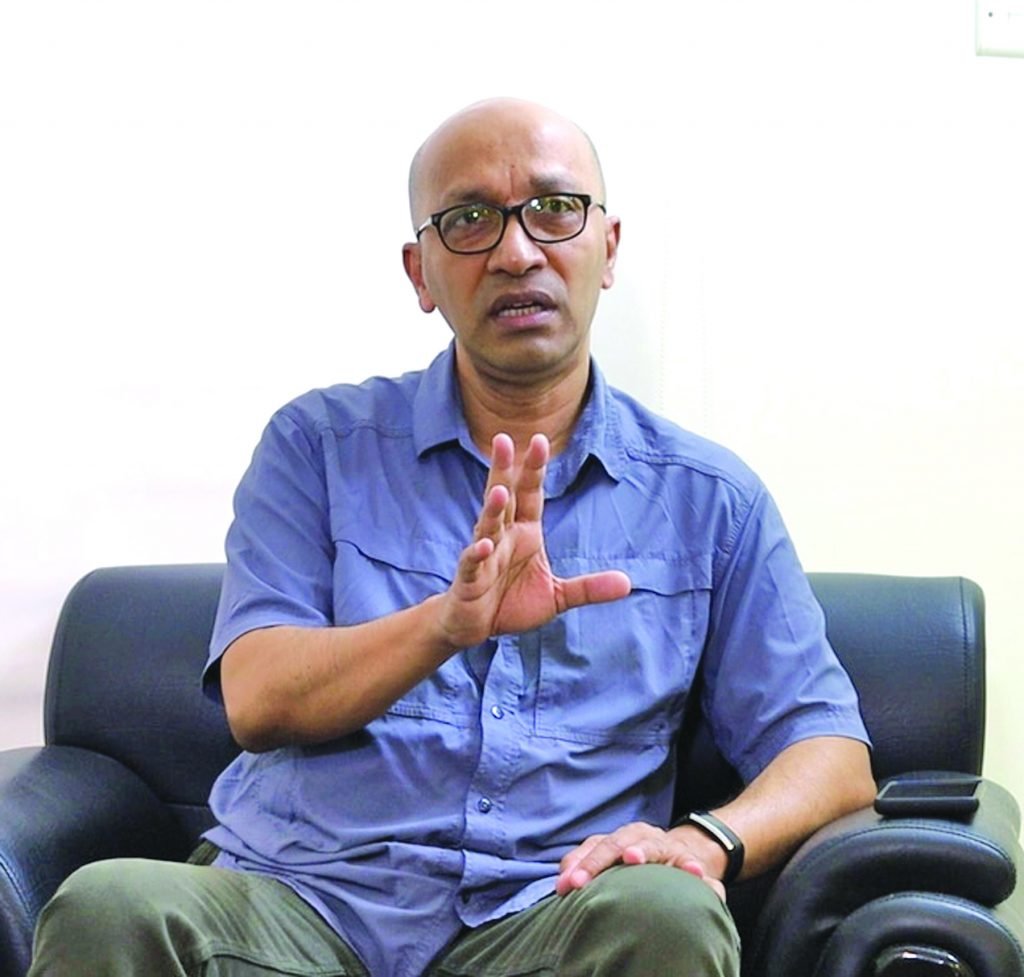
That’s the reason we made the planning papers in Bengali language, whereas, all the previous development plans were in English. Regardless the planning, because of language difficulties, general people couldn’t understand the work. But, it’s the very first urban masterplan scripted in Bengali language.
Apart from language, how people will get to know about the features and policies of DAP in terms of their own property and mouza numbers?
When DAP will be approved by the government, it will be published as gazette on website. If anyone want to check their land details, they have to put their mouza number and it will automatically show related information. Alongside this, we are letting people know about DAP through mass media, discussions and education institution-based workshops. For the first time, in this project, we have taken people’s opinion online wherein people directly expressed their thoughts regarding how they want to structure their city.
Regarding global liveability index and considering the downgraded position of Dhaka city. How much positive effect will come through DAP?
Firstly, we are more concerned about peoples’ lifestyle in Dhaka city. As a city dweller, we are more aware of the liveability than what index shows. DAP is designed considering the critical parameters and leverage points to develop the urban life. Considering socio-economic circumstances, security, natural reserves, concentrations of schools and hospitals- we have failed to provide a planned city for our next generation. DAP is concerned about changing all these parameters fundamentally. What we require most is the firm goodwill and transparency from the policy makers.
Currently, numbers of mega projects are running in Dhaka city. Is DAP compatible or contradictory in terms of design to these large scale constructions?
Mega projects are not considered in the apex priority of DAP. Talking particularly, metro rail will cover 9-11% trips, whereas, bus based urban transportation plan will benefit 45% people with a cost of only 4500 crore BDT- as reported in the Revised Strategic Plan (RSTP). That is why, DAP is more concerned about road transportation, traffic system, pedestrian walkways, waterways etc.
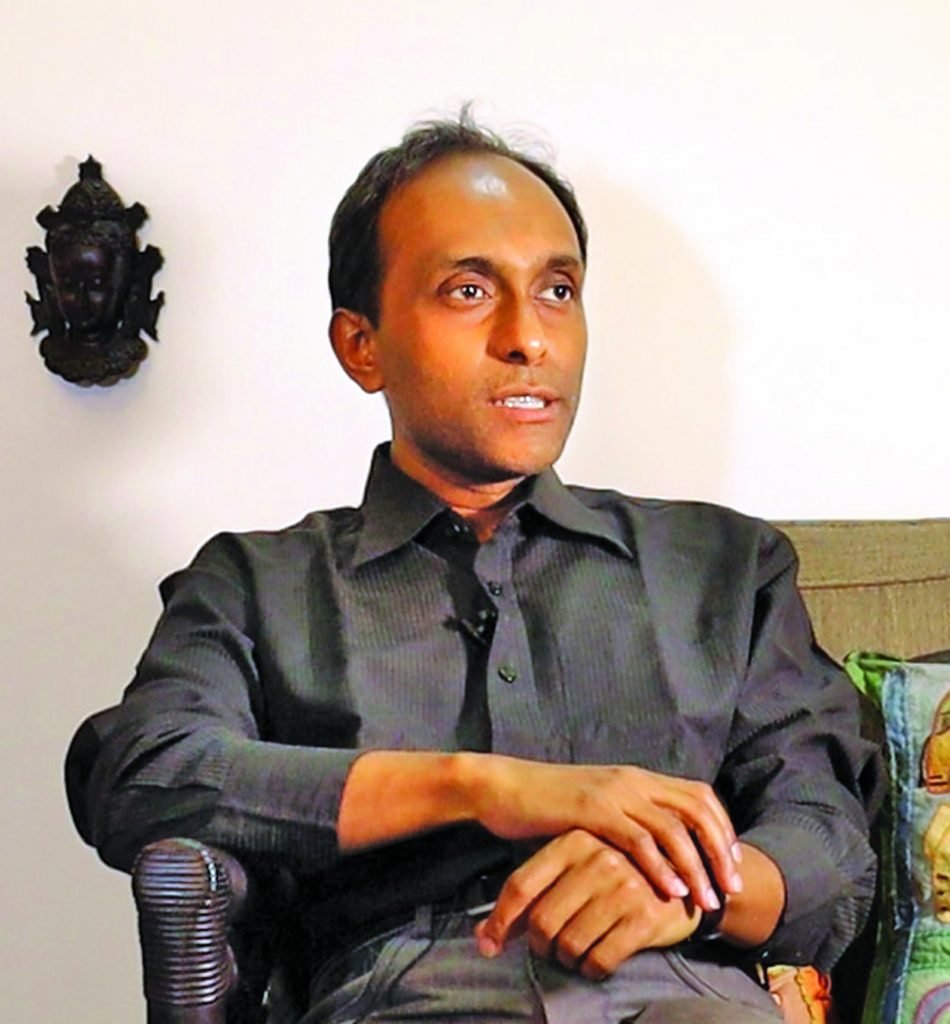
- HOW WAS DAP IN THE BEGINNING AND HOW IT STARTED?
The city is said to be the tool of economic growth. The area of Dhaka is one percent of the country but ten percent of the whole population live here. And, Dhaka contributes 33% to the country’s GDP. Then, why Dhaka should not be a good and effective city; why the natural condition of Dhaka is worse? This should be the best liveable city in the world. These things came to our minds again and again when we started working. A city is identified as a human settlement. To put it mildly, city is a shelter. There will be people in the city, they will work, they will enjoy life. That means a meaningful life they will lead. The city is like our home. So, we started thinking about the city that our people live in, we live in and started fixing policies.
2. WHAT KIND OF PLANS HAS DAP MADE FOR THE CITY?
All the planning made addressing the city as a living entity. The city is not a fixed identity or physical space. The city is an ever-changing entity. Humans have growth or periodical changes. The city itself has various evolutions and phases. Then, we thought that if we plan it too rigidly or tightly, it will be a counter product for the future. It won’t be very effective. What can be done then? Our plan was for the city to function properly. Taking into account the change, the transformation, the growth, the progress, and the human-like journey that the city has, so that it’s not hindered. This was one of the main features of our plan.
3. DID YOU PLAN BASED ON THAT?
In fact, the way we live in the city is the way we see the city. Is the city really like that? We needed to gather a lot of information on this subject. Surprisingly, in researching on 1,528 sq. ft. of land covered by DAP, we found that 84% of the houses were single storey. 80% of the houses of the two city corporations in Dhaka are one storey. We also found that 76% of the houses are made by raw materials or semi-finished. So, based on this database, we have to make a plan that will be easy for everyone.
WHAT ISSUES HAVE BEEN PRIORITISED IN REVISED DAP?
While establishing DAP, importance has been given to the issue of population density planning, which can play a positive role in building a liveable Dhaka. The master plan provides for population density incentives for block-based development, transit-based development around metro stations etc. Under the incentive, constructing buildings in small block size has been encouraged rather than in 3-Katha or 5-Katha land. Playground should be built inside that block and the children of that community would be able to play there. In return, certain discount will be given on the height of the building. DAP has identified 54 locations with special emphasis on lower and lower-middle class housing. Plans have been made to ensure housing for all by constructing 650-700 sq. ft. flats in specific areas.
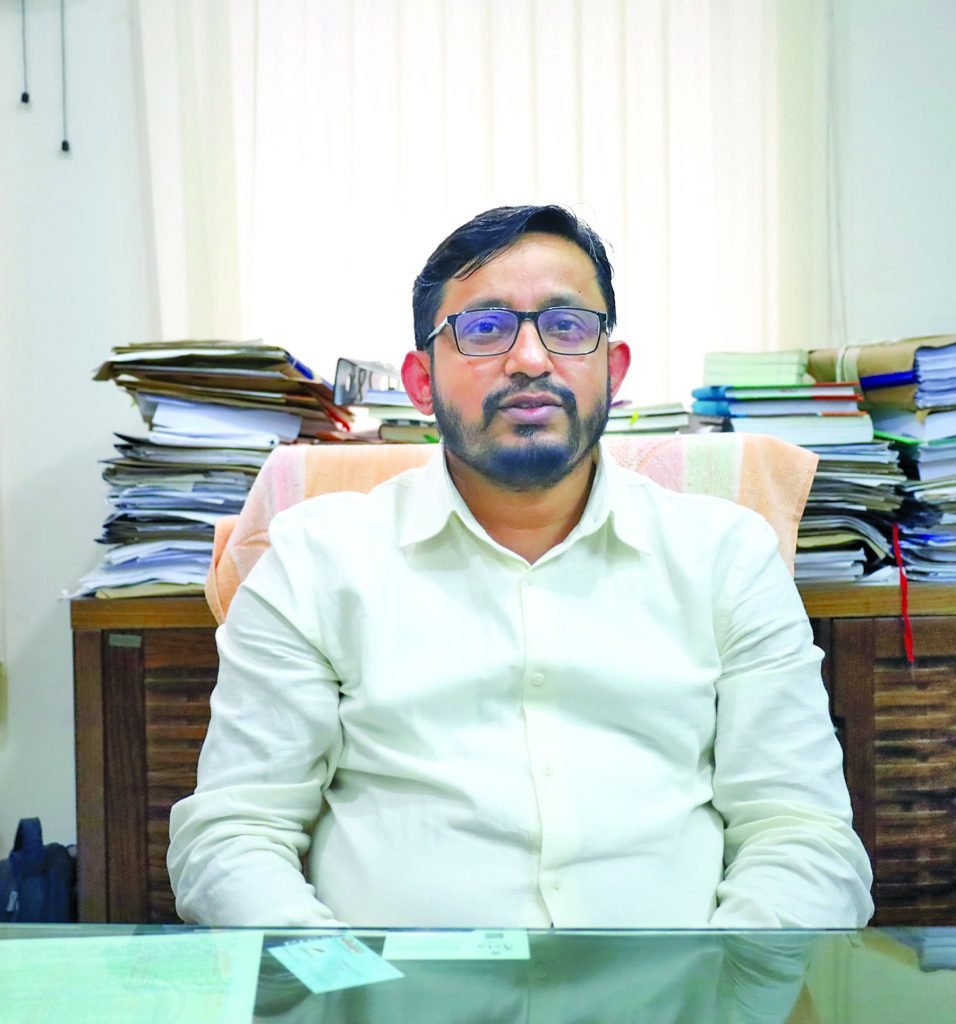
Housing arrangements will be made by the housing companies and RAJUK on their own initiative and will be handed over to the low income people through special incentives. It has also been proposed to create a transit-oriented development zone centring around the Metrorail.
DOES THIS DAP COVER PLANS TO REDUCE TRAFFIC CONGESTION IN DHAKA?
Low speed vehicles are one of the main causes of traffic jams. Special plans have been made especially for rickshaws. Besides, we are giving priority to public transport in the city. Bus route rationalization work is underway. At the same time, we have proposed 202 km of bicycle lanes in the entire metropolitan area. In order to reduce the unwanted traffic congestion in Dhaka, three ring roads have been proposed. Besides, five Metrorail and two BRT lines have been proposed. Besides, it has been projected to restore the canals of Dhaka and arrange transportation through them like Hatirjheel.
WHAT IS IN THE REVISED DAP TO REDUCE WATERLOGGING OR WATER MANAGEMENT IN THE CAPITAL?
Dhaka was once surrounded by rivers like Venice. There are plans in DAP for how we can recover the waterways. There are four rivers on four sides of Dhaka, we are working to restore the watercourses by conserving those rivers. Initially, we will restore 23 canals on CS and RS basis and make walkways on both sides of the river so that people can walk. At the same time, we will connect the canals with the river in a way, so that waterlogging does not occur and the water management of Dhaka is maintained properly.
WHAT IS THE PLAN TO REDUCE THE PRESSURE OF POPULATION IN DHAKA?
We have proposed to set up six regional centres around the capital to reduce the pressure of the population in Central Dhaka. Purbachal, Jhilmil, Gazipur, Savar, Keraniganj will be our regional centres. Again, we have proposed for the development of these areas under the Union Parishad focussed on each Regional Centre. Hence, employment for people will be created inside Dhaka. The corridor of Metroline-5 has been provided in Hemayetpur for the people of Savar area so that those who come to work in Central Dhaka can move to the Regional Centre quickly. Similarly, we have taken MRT Line-1 to Purbachal. We think that balanced development should be done everywhere, then the pressure of population in Dhaka can be reduced. At the same time, the provision of all the daily necessities including advanced medicine corners, schools, and shopping malls will be created regionally. So that, people in Gazipur, Savar, or Keraniganj do not have to go from one end to the other. In a word, it is planned in such a way that everything will be available at walking distance.

